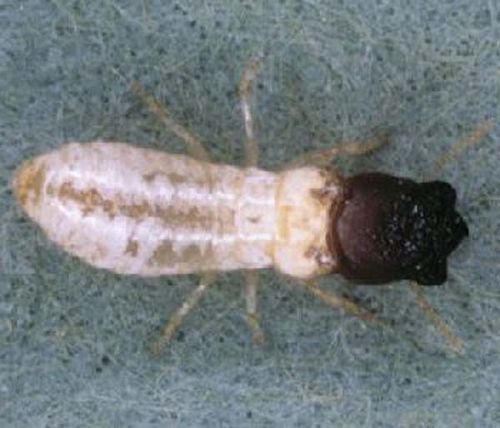|

West Indian drywood termite
Image by ARS Image Gallery - License: Public Domain. (view image details)
|
|
|
INSECT FACTS |
Identification
The West Indian drywood termite has a rough undulating head with short broad mandibles. The head is dark in colour. They do not form large single colonies but build separate smaller nests over a wide area. Evidence of termite activity is small piles of frass. The termite frass is small brown gritty pellets (smaller than a pinhead). The debris is different to ant debris as it does not contain fibres or parts of dead insects.
Size
Soldier length: 5mm - 8mm
Habitat
in Australia has been found in buildings in cities and provincial towns
Food
cellulose from wood
Breeding
forms multiple nests in heartwood and softwood of timber. Also attacks dry timber in buildings.
Range
found throughout the world. Introduced to Australia where it has been found in Queensland including Brisbane, Rockhampton and Maryborough. Also recorded in Sydney and Canberra.
Notes
West Indian drywood termite is one of the most destructive pest species of termites in the world. It is sometimes not detected until serious damage has takes place in buildings. Many colonies can be present in same building and termite fumigation of the whole building may be the only means of control (e.g. by wrapping the entire building in plastic and fumigating with methyl bromide). West Indian drywood termite attack is restricted to construction timber, furniture and occasionally paper products
Classification
| Class: | Insecta | | Order: | Isoptera | | Family: | Kalotermitidae | | Genus: | Cryptotermes | | Species: | brevis | | Common Name: | West Indian drywood termite |
Relatives in same Genus
Native Drywood Termite (C. primus)
|
|

